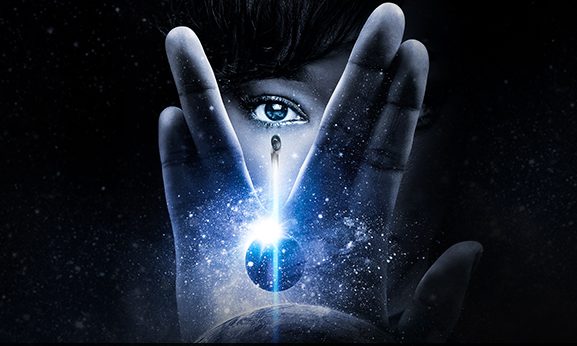It’s too easy to start with “where no Star Trek series has gone before” with Discovery’s US debut on the CBS All Access streaming portal, but there you go. Once you’ve decided to legally watch the show, it’s time to sign up, open up the wallet, and hope there’s something else to watch for the rest of the week.
Here in the UK it’s a pretty similar proposition, albeit on an existing and well-populated service – the show is so prominent on Netflix that subscribers can’t miss it – but the fundamental pitch of bringing in fans to a subscription service to finance the show is still there. Selling into a subscription service generally needs a bit of sugar to tempt in the audience, and this is where Star Trek Discovery missed a trick from the late seventies…
Following the success of Star Wars in 1977, film and TV executives scrambled to get science-fiction properties off the ground. This was an expensive endeavour requiring practical effects and extensive model work alongside huge sets which pushed up the cost to the US networks. In an effort to recoup some of the investment in the pilot episode of Battlestar Galactica, the three episodes were edited together into a feature-length presentation which was released in Canada, Australia, Europe and Latin America.
This was how I first discovered Galactica, in a dusty cinema with my Dad taking me to the pictures as a Saturday afternoon treat. No doubt the mix of “space stuff” for me and “Lorne Greene from Bonanza” helped.
That release, along with the heavy promotion of “the new Star Wars“, ensured the initial success of Galactica and further episodes of the TV show were edited to create more theatrical releases (Mission Galactica, anyone?) Producer Glen A. Larson pulled off the same strategy with his next space opera, the delightfully camp Buck Rogers In The 25th Century. The success of the theatrical release of the backdoor pilot led directly to the commissioning of the subsequent TV series.
There’s an appetite for this sort of event television in the twenty-first century – look at the BBC’s success with the cinematic screening of the final episode of Sherlock and the fiftieth anniversary episode of Doctor Who.
Discovery’s opening two-parter is tailor-made to be smashed together and projected in your local multiplex. And it’s not like there was anything else going on for the fortieth anniversary of Star Trek’s first episode (8 September 1967).
What if, forty years, to the day, Star Trek Discovery had opened in cinemas around the world?
Imagine the energy of those events had been harnessed by the Star Trek community. The first new Star Trek series in twelve years, a big event for the press to get their teeth into and countless photo opportunities from fans attending the screenings. As well as the financial return, the increased visibility in the world’s media and the ability to energise the fan base would have given Star Trek Discovery an even bigger opening as it debuted around the world… and more people ready to sign up to the streaming services.
As Discovery seeks out new distribution methods and new ways to monetise TV shows, it forget to boldly go where the seventies had already gone before.
